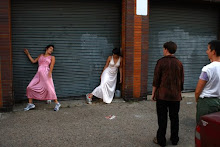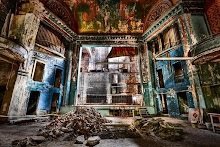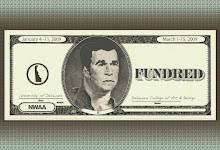


NWAA Presents: Brookes Britcher and Amanda Kamen
In his 1970 exhibition, Information, at the Museum of Modern Art, artist Joseph Kosuth proposed a new way to experience a work of art—by reading it. Kosuth and other artists aligned with conceptual or Story Art in the mid-1970s were using text as a narrative tool within their works. Brookes Britcher and Amanda Kamen find similar ways to include the nostalgic through the combination of text and image, recalling past emotional states or personal memories.
Britcher is a multi-disciplinary artist who creates pieces that investigate process, relationships, and emotional states. He describes his sculptures as “diaristic,” recording his responses to past events or feelings.1 Prior to his current body of work Brookes concentrated on photography, capturing images of discarded things. As his process and interest shifted into making, he retained that focus on found materials, and has accumulated objects for his pieces. That process of collecting is integral to his practice and Brookes likens the refiguring of the objects into his sculptures as therapeutic.2 Equally important is titling, and it is here that Brookes conveys those “archives of moments” that each work captures.3 This second layer of meaning provides a direction for the viewer but, as with Giving names to countertops (2008), the narrative if often cryptic and deeply personal, as if the viewer is allowed a brief glimpse into the artist’s thoughts. By exploring the past as source material for his work, Britcher documents that process of constructing memory.
Amanda Kamen’s journalistic drawings explore her personal experiences. She is a collector of sorts—accumulating old lists, journals, found words, images from clippings, past conversations, and remembered situations. These are the fodder for her work and she notes that her work “encourages a desire for understanding the human condition and the natural world.”4 Her process begins with this collecting and mark making, and progresses to small studies with the possibility of reaching a final, larger drawing. Kamen also has a love for animals and includes them with humorous quotes or imperatives, as in psst (moose) (2009). Like other figures in her drawings, the animals become peculiar characters, intent on eliciting a response from the viewer. These often quirky text and image combinations are a lighter approach to the conundrum of human existence.
Both Britcher and Kamen expose the personal through their work, as recordings of events past or those yet or never to come. Critics noted a sense of introspection as representative of the 1970s and one could argue that this mood is again present in Britcher’s and Kamen’s work. Like artists from the now almost invisible Story Art group in the mid-1970s, Britcher and Kamen focus on the direct sense of the personal—“the artist, his life, his thinking process, his sensations, desires and visions that are seen by the viewer.”5
—Margaret Winslow, Curator
1Brookes Britcher, Conversation with artist, March 26, 2009.
2Ibid.
3Ibid.
4Amanda Kamen, Artist Statement, 2009.
5Paul Schimmel, ed., American Narrative/Story Art: 1967-1977 (Houston: Contemporary Arts Museum, 1977): 4.
—Margaret Winslow, Curator
1Brookes Britcher, Conversation with artist, March 26, 2009.
2Ibid.
3Ibid.
4Amanda Kamen, Artist Statement, 2009.
5Paul Schimmel, ed., American Narrative/Story Art: 1967-1977 (Houston: Contemporary Arts Museum, 1977): 4.
































No comments:
Post a Comment